Antoine Manzanera
Double Descent Meets Out-of-Distribution Detection: Theoretical Insights and Empirical Analysis on the role of model complexity
Nov 04, 2024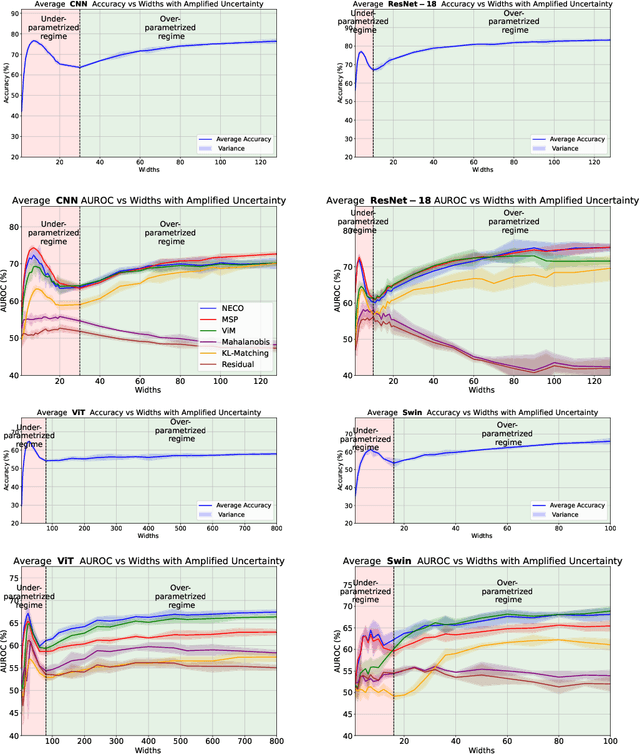
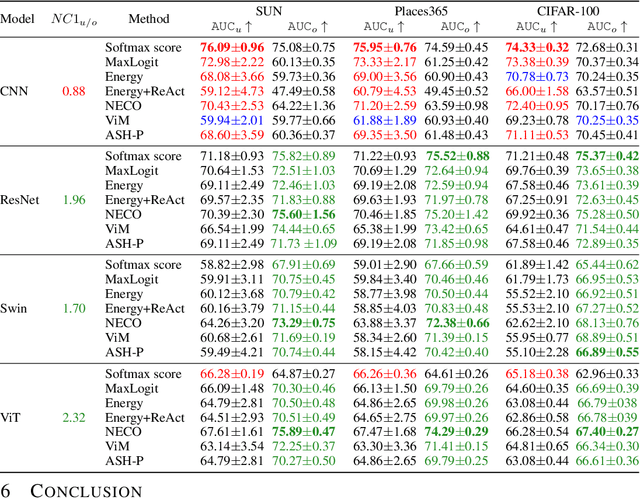
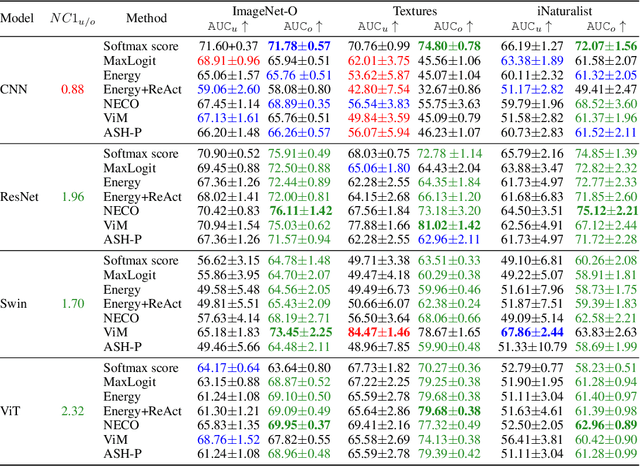
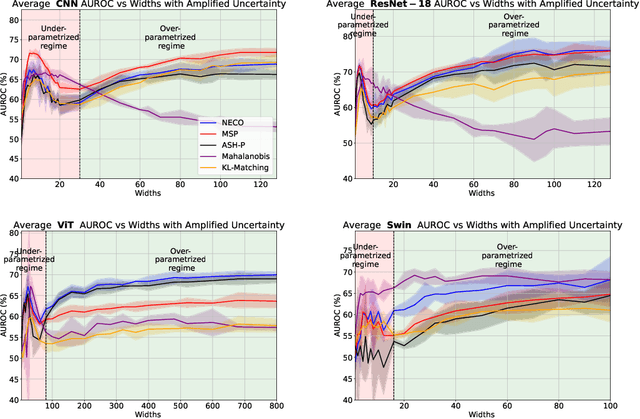
Abstract:While overparameterization is known to benefit generalization, its impact on Out-Of-Distribution (OOD) detection is less understood. This paper investigates the influence of model complexity in OOD detection. We propose an expected OOD risk metric to evaluate classifiers confidence on both training and OOD samples. Leveraging Random Matrix Theory, we derive bounds for the expected OOD risk of binary least-squares classifiers applied to Gaussian data. We show that the OOD risk depicts an infinite peak, when the number of parameters is equal to the number of samples, which we associate with the double descent phenomenon. Our experimental study on different OOD detection methods across multiple neural architectures extends our theoretical insights and highlights a double descent curve. Our observations suggest that overparameterization does not necessarily lead to better OOD detection. Using the Neural Collapse framework, we provide insights to better understand this behavior. To facilitate reproducibility, our code will be made publicly available upon publication.
Leveraging a realistic synthetic database to learn Shape-from-Shading for estimating the colon depth in colonoscopy images
Nov 08, 2023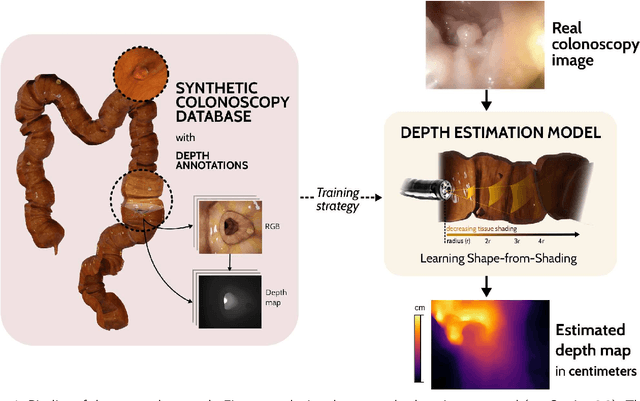
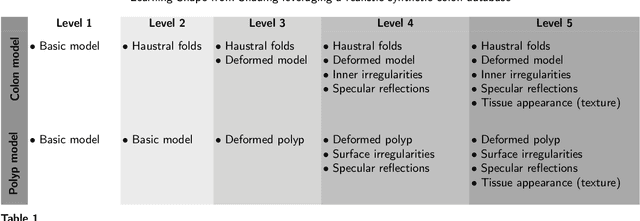
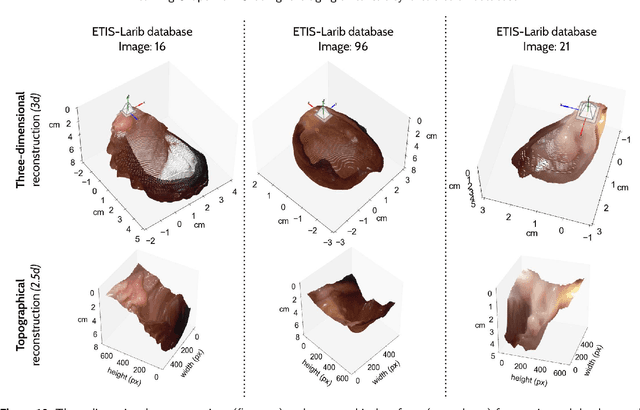
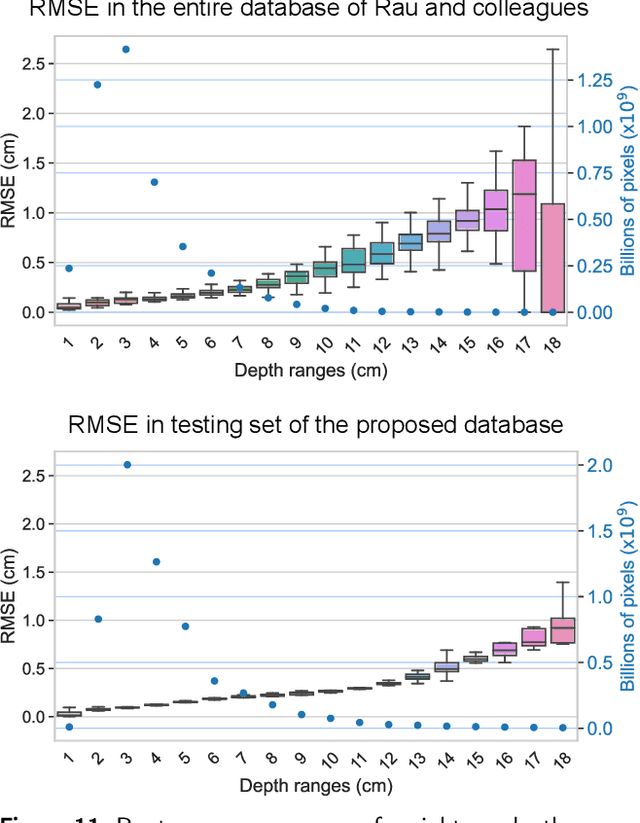
Abstract:Colonoscopy is the choice procedure to diagnose colon and rectum cancer, from early detection of small precancerous lesions (polyps), to confirmation of malign masses. However, the high variability of the organ appearance and the complex shape of both the colon wall and structures of interest make this exploration difficult. Learned visuospatial and perceptual abilities mitigate technical limitations in clinical practice by proper estimation of the intestinal depth. This work introduces a novel methodology to estimate colon depth maps in single frames from monocular colonoscopy videos. The generated depth map is inferred from the shading variation of the colon wall with respect to the light source, as learned from a realistic synthetic database. Briefly, a classic convolutional neural network architecture is trained from scratch to estimate the depth map, improving sharp depth estimations in haustral folds and polyps by a custom loss function that minimizes the estimation error in edges and curvatures. The network was trained by a custom synthetic colonoscopy database herein constructed and released, composed of 248,400 frames (47 videos), with depth annotations at the level of pixels. This collection comprehends 5 subsets of videos with progressively higher levels of visual complexity. Evaluation of the depth estimation with the synthetic database reached a threshold accuracy of 95.65%, and a mean-RMSE of 0.451 cm, while a qualitative assessment with a real database showed consistent depth estimations, visually evaluated by the expert gastroenterologist coauthoring this paper. Finally, the method achieved competitive performance with respect to another state-of-the-art method using a public synthetic database and comparable results in a set of images with other five state-of-the-art methods.
NECO: NEural Collapse Based Out-of-distribution detection
Oct 12, 2023
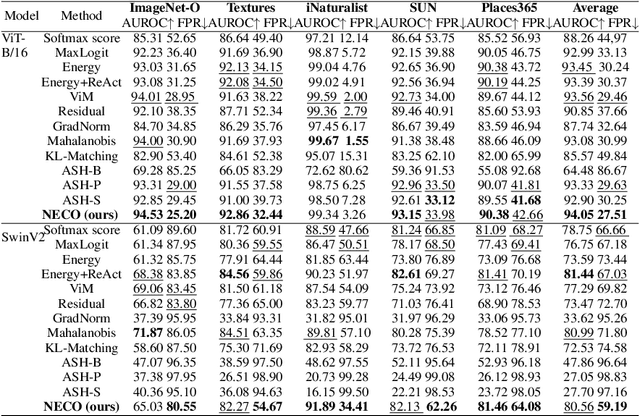

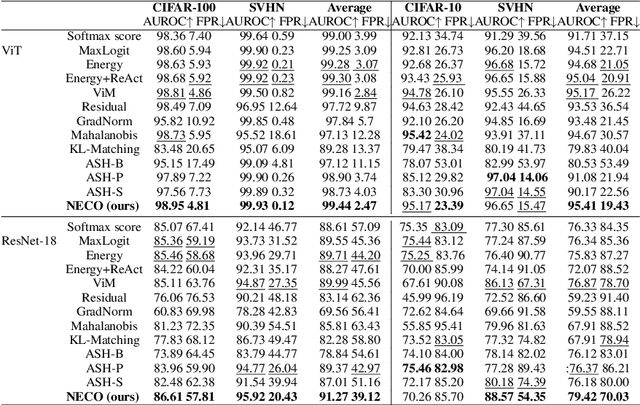
Abstract:Detecting out-of-distribution (OOD) data is a critical challenge in machine learning due to model overconfidence, often without awareness of their epistemological limits. We hypothesize that ``neural collapse'', a phenomenon affecting in-distribution data for models trained beyond loss convergence, also influences OOD data. To benefit from this interplay, we introduce NECO, a novel post-hoc method for OOD detection, which leverages the geometric properties of ``neural collapse'' and of principal component spaces to identify OOD data. Our extensive experiments demonstrate that NECO achieves state-of-the-art results on both small and large-scale OOD detection tasks while exhibiting strong generalization capabilities across different network architectures. Furthermore, we provide a theoretical explanation for the effectiveness of our method in OOD detection. We plan to release the code after the anonymity period.
InfraParis: A multi-modal and multi-task autonomous driving dataset
Sep 27, 2023Abstract:Current deep neural networks (DNNs) for autonomous driving computer vision are typically trained on specific datasets that only involve a single type of data and urban scenes. Consequently, these models struggle to handle new objects, noise, nighttime conditions, and diverse scenarios, which is essential for safety-critical applications. Despite ongoing efforts to enhance the resilience of computer vision DNNs, progress has been sluggish, partly due to the absence of benchmarks featuring multiple modalities. We introduce a novel and versatile dataset named InfraParis that supports multiple tasks across three modalities: RGB, depth, and infrared. We assess various state-of-the-art baseline techniques, encompassing models for the tasks of semantic segmentation, object detection, and depth estimation.
A study of deep perceptual metrics for image quality assessment
Feb 17, 2022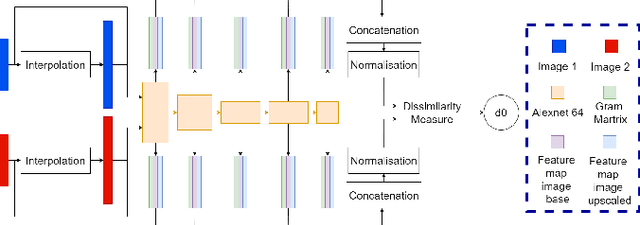



Abstract:Several metrics exist to quantify the similarity between images, but they are inefficient when it comes to measure the similarity of highly distorted images. In this work, we propose to empirically investigate perceptual metrics based on deep neural networks for tackling the Image Quality Assessment (IQA) task. We study deep perceptual metrics according to different hyperparameters like the network's architecture or training procedure. Finally, we propose our multi-resolution perceptual metric (MR-Perceptual), that allows us to aggregate perceptual information at different resolutions and outperforms standard perceptual metrics on IQA tasks with varying image deformations. Our code is available at https://github.com/ENSTA-U2IS/MR_perceptual
Does it work outside this benchmark? Introducing the Rigid Depth Constructor tool, depth validation dataset construction in rigid scenes for the masses
Mar 29, 2021
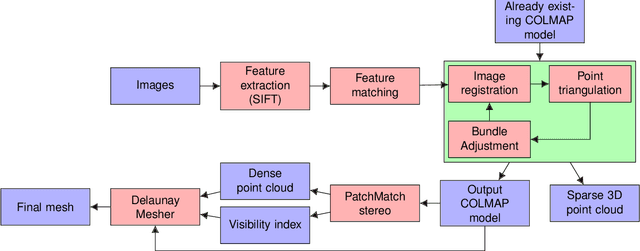
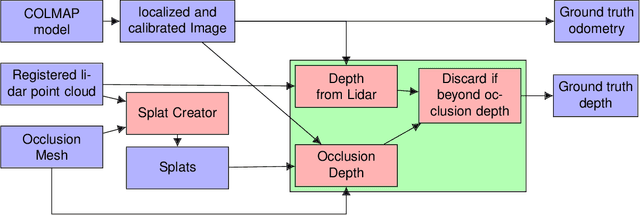
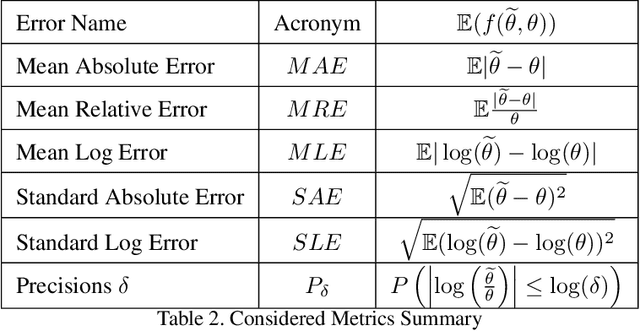
Abstract:We present a protocol to construct your own depth validation dataset for navigation. This protocol, called RDC for Rigid Depth Constructor, aims at being more accessible and cheaper than already existing techniques, requiring only a camera and a Lidar sensor to get started. We also develop a test suite to get insightful information from the evaluated algorithm. Finally, we take the example of UAV videos, on which we test two depth algorithms that were initially tested on KITTI and show that the drone context is dramatically different from in-car videos. This shows that a single context benchmark should not be considered reliable, and when developing a depth estimation algorithm, one should benchmark it on a dataset that best fits one's particular needs, which often means creating a brand new one. Along with this paper we provide the tool with an open source implementation and plan to make it as user-friendly as possible, to make depth dataset creation possible even for small teams. Our key contributions are the following: We propose a complete, open-source and almost fully automatic software application for creating validation datasets with densely annotated depth, adaptable to a wide variety of image, video and range data. It includes selection tools to adapt the dataset to specific validation needs, and conversion tools to other dataset formats. Using this application, we propose two new real datasets, outdoor and indoor, readily usable in UAV navigation context. Finally as examples, we show an evaluation of two depth prediction algorithms, using a collection of comprehensive (e.g. distribution based) metrics.
Learning structure-from-motion from motion
Oct 19, 2018



Abstract:This work is based on a questioning of the quality metrics used by deep neural networks performing depth prediction from a single image, and then of the usability of recently published works on unsupervised learning of depth from videos. To overcome their limitations, we propose to learn in the same unsupervised manner a depth map inference system from monocular videos that takes a pair of images as input. This algorithm actually learns structure-from-motion from motion, and not only structure from context appearance. The scale factor issue is explicitly treated, and the absolute depth map can be estimated from camera displacement magnitude, which can be easily measured from cheap external sensors. Our solution is also much more robust with respect to domain variation and adaptation via fine tuning, because it does not rely entirely in depth from context. Two use cases are considered, unstabilized moving camera videos, and stabilized ones. This choice is motivated by the UAV (for Unmanned Aerial Vehicle) use case that generally provides reliable orientation measurement. We provide a set of experiments showing that, used in real conditions where only speed can be known, our network outperforms competitors for most depth quality measures. Results are given on the well known KITTI dataset, which provides robust stabilization for our second use case, but also contains moving scenes which are very typical of the in-car road context. We then present results on a synthetic dataset that we believe to be more representative of typical UAV scenes. Lastly, we present two domain adaptation use cases showing superior robustness of our method compared to single view depth algorithms, which indicates that it is better suited for highly variable visual contexts.
Multi range Real-time depth inference from a monocular stabilized footage using a Fully Convolutional Neural Network
Sep 12, 2018



Abstract:Using a neural network architecture for depth map inference from monocular stabilized videos with application to UAV videos in rigid scenes, we propose a multi-range architecture for unconstrained UAV flight, leveraging flight data from sensors to make accurate depth maps for uncluttered outdoor environment. We try our algorithm on both synthetic scenes and real UAV flight data. Quantitative results are given for synthetic scenes with a slightly noisy orientation, and show that our multi-range architecture improves depth inference. Along with this article is a video that present our results more thoroughly.
* arXiv admin note: text overlap with arXiv:1809.04453
End-to-end depth from motion with stabilized monocular videos
Sep 12, 2018



Abstract:We propose a depth map inference system from monocular videos based on a novel dataset for navigation that mimics aerial footage from gimbal stabilized monocular camera in rigid scenes. Unlike most navigation datasets, the lack of rotation implies an easier structure from motion problem which can be leveraged for different kinds of tasks such as depth inference and obstacle avoidance. We also propose an architecture for end-to-end depth inference with a fully convolutional network. Results show that although tied to camera inner parameters, the problem is locally solvable and leads to good quality depth prediction.
Binary Distance Transform to Improve Feature Extraction
Dec 19, 2016



Abstract:To recognize textures many methods have been developed along the years. However, texture datasets may be hard to be classified due to artefacts such as a variety of scale, illumination and noise. This paper proposes the application of binary distance transform on the original dataset to add information to texture representation and consequently improve recognition. Texture images, usually in grayscale, suffers a binarization prior to distance transform and one of the resulted images are combined with original texture to improve the amount of information. Four datasets are used to evaluate our approach. For Outex dataset, for instance, the proposal outperforms all rates, improvements of an up to 10\%, compared to traditional approach where descriptors are applied on the original dataset, showing the importance of this approach.
 Add to Chrome
Add to Chrome Add to Firefox
Add to Firefox Add to Edge
Add to Edge